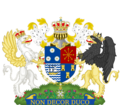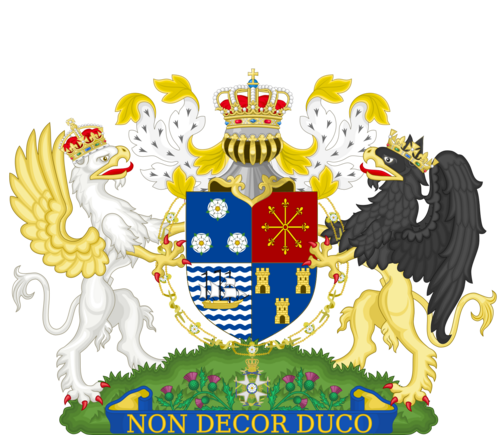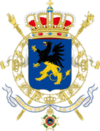Monarchy of Aquitayne
This article is incomplete because it is pending further input from participants, or it is a work-in-progress by one author. Please comment on this article's talk page to share your input, comments and questions. Note: To contribute to this article, you may need to seek help from the author(s) of this page. |
| King of the Kingdom of Aquitayne | |
|---|---|
 | |
| Incumbent | |
 | |
| Samuel I since 7 December 2012 | |
| Details | |
| Style | His Majesty |
| Heir apparent | Prince Liam, Duke of Acril |
| Residence | Royal Palace, Telora |
The monarchy of Aquitayne, commonly referred to as simply the monarchy, is the constitutional monarchy of Aquitayne, and the United Kingdom. It also previously included all of Aquitayne's overseas territories. The current monarch and head of state is King Samuel I, who ascended to the throne in 2012 after the death of his father.
The monarch and their immediate family undertake various official, ceremonial, diplomatic and representational duties. The monarchy must complete their duties in a non-partisan manner, upholding only their belief the action is good for the kingdom. The monarch is required to appoint the prime minister, as well as bestow honors. The monarch is also the head of the Aquitaynian armed forces. The monarch ultimately has sole discretion over the use of the nation's armed services through their royal prerogative, and the same stands for the passage of legislation through parliament, which requires royal assent. The Government of Aquitayne is known as His Majesty's Government.
Constitutional and legal role
In the codified Constituion of Aquitayne, the Monarch (otherwise referred to as the sovereign or "His/Her Majesty, abbreviated H.M) is the head of state. The King's image is used to signify Aquitaynian sovereignty and authority. His image, likeness, and profile appear on currency, for example. His portrait also appears on government buildings, and his person as representative of the crown is used for the issuing of passports. The sovereign is also further mentioned in songs, loyal toasts, and salutes. Oaths of allegiance are made to the King and his lawful successors.
The monarch takes a large role in government. Though he must remain non-partisan, the monarch ultimately has the authority to reject or pass the laws of parliament, as well as order the use of the military and declare war. The constitution outlines specific roles and responsibilities the monarch must carry out for the nation, one of which being the royal appointment of members to the High Court in the event of a death of a sitting judge. In the modern era, many of the responsibilities of the monarch are carried out and delegated to ministers, appointed officials, and parliament. These do not include actions that must be carried out by the monarch personally, such as crown appointments, knighthoods, the opening of parliament, etc.
History
Empire of Exponent
Independence
Modern status
Succession
Restrictions by gender
Regency
Finances
Residences
Style
Arms



